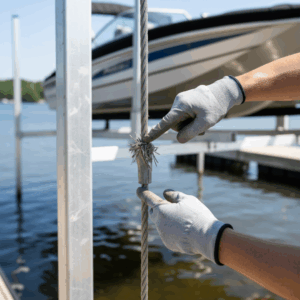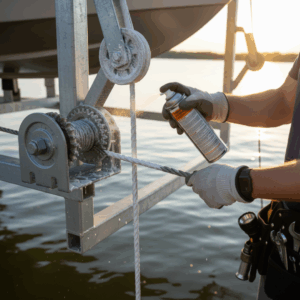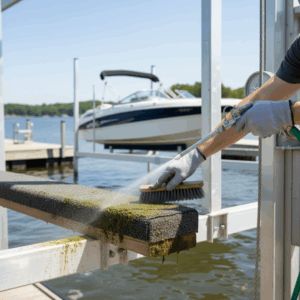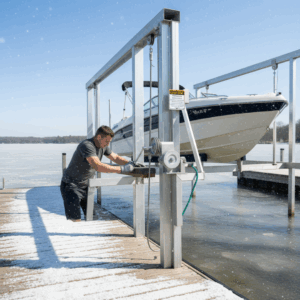How Does a Vertical Boat Lift Work? A Complete Guide for Boat Owners
If you’ve been asking yourself, how does a vertical boat lift work, the answer lies in its design, specifications, and practical benefits for protecting your boat. A vertical boat lift isn’t just an accessory, it’s an essential dockside system built to extend the life of your vessel, simplify docking, and handle changing water conditions.
What Is a Vertical Boat Lift?
A vertical boat lift is a heavy-duty dockside system that uses a cradle, cable, and lifting frame to raise boats completely out of the water. It’s designed for durability and efficiency, making it ideal for owners who dock in deeper water or deal with fluctuating water levels.
Typical specifications include:
- Lift Capacity: Ranges from 1,500 lbs. to over 10,000 lbs., depending on the model.
- Boat Size Compatibility: Works for fishing boats, pontoons, wake boats, and smaller yachts.
- Materials: Often constructed from marine-grade aluminum or galvanized steel to resist corrosion.
- Lift Height: Can raise boats up to 60–70 inches above waterline, keeping hulls completely dry.
- Drive Options: Manual winch, electric motor, or hydraulic system.
How Does a Vertical Boat Lift Work?
Here’s a breakdown of the system in action:
- Boat Alignment – The boat is guided into the lift where the cradle, fitted with carpeted bunks or guides, supports the hull evenly.
- Cradle Lift System – Cables, connected to a winch or motorized drive, raise the cradle straight upward along the vertical frame.
- Secured Storage – The boat is suspended above the waterline, away from algae, wave action, and debris.
Because the lift moves straight up and down, it operates smoothly even in deep water or areas with 2–4 feet of water level fluctuation, which makes it more versatile than cantilever lifts.
Product Uses and Advantages
A vertical boat lift offers more than just convenience. It’s built to solve real-world boating problems:
- Hull Protection – Keeps the hull dry, preventing algae, barnacle buildup, and corrosion.
- Stability in Rough Waters – Prevents your boat from bouncing against the dock during high winds or strong waves.
- Year-Round Use – Suitable for freshwater lakes, rivers, and even saltwater environments when equipped with corrosion-resistant materials.
- Ease of Launching and Retrieval – With electric or hydraulic models, you can lift or lower your boat with the push of a button.
- Versatility – Can support a wide range of vessels from jet skis to large pontoons.
Choosing the Right Vertical Boat Lift
When selecting a lift, compare specifications based on your boat type and environment:
- Weight Rating – Always choose a lift rated at least 20% higher than your boat’s dry weight.
- Lift Height – Ensure the cradle raises high enough above typical water fluctuations in your area.
- Drive System –
- Manual: Low cost but requires effort.
- Electric: Convenient and quick.
- Hydraulic: Premium option with smooth, remote-controlled operation.
- Frame Material – Aluminum for lightweight corrosion resistance; galvanized steel for heavy-duty strength.
Maintenance for Long-Term Use
Vertical boat lifts are engineered for durability, but proper care ensures peak performance:
- Inspect Cables – Replace immediately if frayed.

- Lubricate Pulleys & Winch – Keeps lifting smooth and reduces wear.

- Clean Cradle Bunks – Prevent debris buildup that can scratch hulls.

- Seasonal Adjustments – Raise or remove lift in freezing climates to prevent ice damage.

Final Thoughts
So, how does a vertical boat lift work? It combines a sturdy vertical frame, cradle, and cable system to lift your boat safely out of the water, offering unmatched protection and convenience. With the right model, you’ll enjoy longer boat life, smoother docking, and less maintenance. If you’re ready to invest in a dependable lift system, Dockstop provides high-quality vertical boat lifts tailored to different boat sizes and environments ensuring your vessel gets the protection it deserves.
